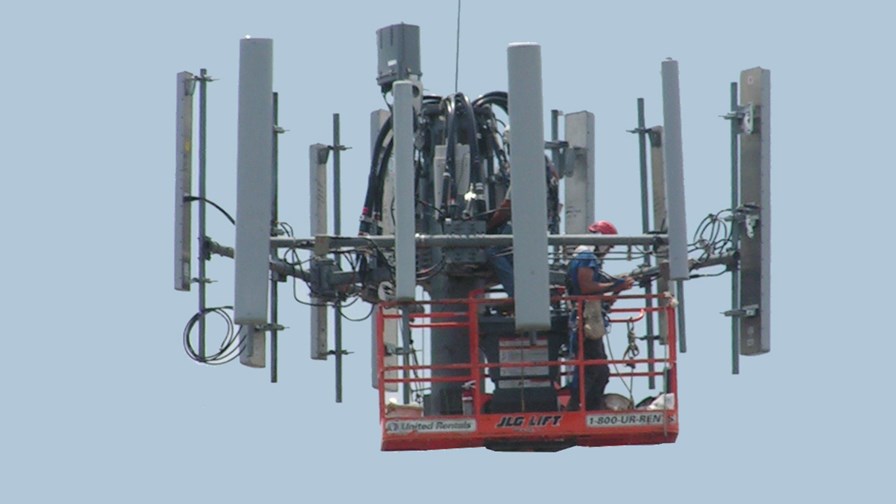
via Flickr © byzantiumbooks (CC BY 2.0)
- Another 10 cities to follow this year
- Will roll out 100 cell sites a month
- It even has a range of 5G handsets ready
EE is poised to flick the switch on its non-standalone 5G network which will provide coverage for its first six UK cities at the end of this month. It has both SIM-only services and handsets with plans from six brands, including Samsung and OnePlus.
Its new 5G ‘Smart plans’ will give customers access to BT Sport HD, HDR, and an exclusive zero-rated ‘Gamer’s Data Pass’.
A welter of facts, figures and special 5G selling points are sure to roll out across the UK over the next week or two as EE gears up its marketing onslaught.
The UK’s largest mobile telco says it’s launching 5G in the busiest parts of the UK, “where it can really make a difference by providing a more reliable data connection to businesses and consumers.” It expects customers to experience an increase in speeds of around 100-150Mbps even in the busiest areas and also anticipates that some customers will break the one gigabit-per-second milestone on their new devices, but it’s not promising anything.
All in all, EE is showing admirable restraint in sharp contrast to some of its peers who seem unable to resist a quick clamber up the Gartner hype curve when announcing new services or gadgets. We’ll see how that goes as they come on stream.
EE’s roll-out will first equip London, Cardiff, Edinburgh, Belfast, Birmingham and Manchester. It says it will introduce 5G across the busiest parts of Bristol, Coventry, Glasgow, Hull, Leeds, Leicester, Liverpool, Newcastle, Nottingham and Sheffield.
Next year it has designs on Aberdeen, Cambridge, Derby, Gloucester, Peterborough, Plymouth, Portsmouth, Southampton, Worcester and Wolverhampton, with much more to follow after that.
As well as upgrading more than 100 sites to 5G every month, it’s expanding 4G coverage into rural areas, and adding more capacity to these new 4G sites by turning 3G signals into 4G to enable more spectrum for a better network experience.
Rather than confuse customers by conflating non standalone 5G at 3.5GHz (which provides a modest ramp up in speeds when piggy-backed off the existing 4G network) with the promised delights of multi-gigabit, low latency, all singing and dancing 5G as promised when delivered across very high frequency spectrum - and perhaps terminating and returning data from an ‘edge’ facility - EE is being explict about the phased nature of it’s 5G deployment.
It’s just a phase we’re going through
“This is Phase 1 of EE’s 5G rollout: a ‘non-standalone’ deployment focused on using the combined power of 4G and 5G to give customers the fastest, most reliable mobile broadband experience they’ve ever had,” says the blurb.
“Phase 2, from 2022, will introduce the full next generation 5G core network, enhanced device chipset capabilities, and increased availability of 5G-ready spectrum. Higher bandwidth and lower latency, coupled with expansive and growing 5G coverage, will enable a more responsive network, enabling truly immersive mobile augmented reality, real-time health monitoring, and mobile cloud gaming. Phase 2 is also a vital step on our journey to the convergence of our network technologies, as we bring together fixed, mobile and WiFi into one seamless customer experience.
“Phase 3, from 2023, will introduce Ultra-Reliable Low Latency Communications (URLLC), Network Slicing and multi-gigabit-per-second speeds. This phase of 5G will enable critical applications like real-time traffic management of fleets of autonomous vehicles, massive sensor networks with millions of devices measuring air quality across the entire country, and the ‘tactile internet’, where a sense of touch can be added to remote real-time interactions.”
EE set off consumer alarm bells when a press release announcing a 5G trial at the Glastonbury music festival this year, misfired. Instead of highlighting speed and WiFi improvement it triggered a ripple of concern over “high frequency radiation” and its supposed health effects. Needless to say, EE wasn’t testing mmWave services, just slightly different mid frequency ones (see - EE 5G claims prompt tin foil hat backlash).
Email Newsletters
Sign up to receive TelecomTV's top news and videos, plus exclusive subscriber-only content direct to your inbox.




